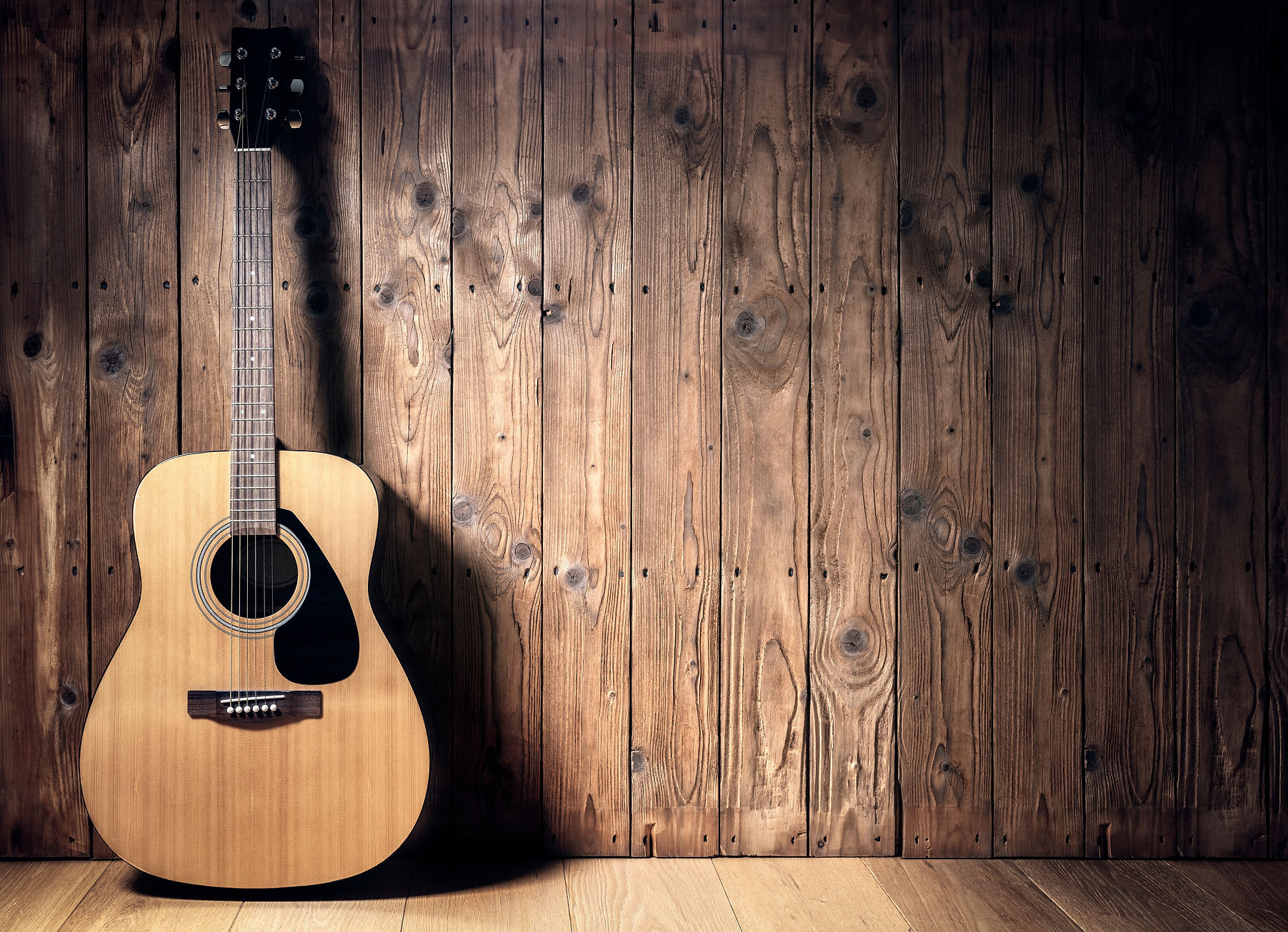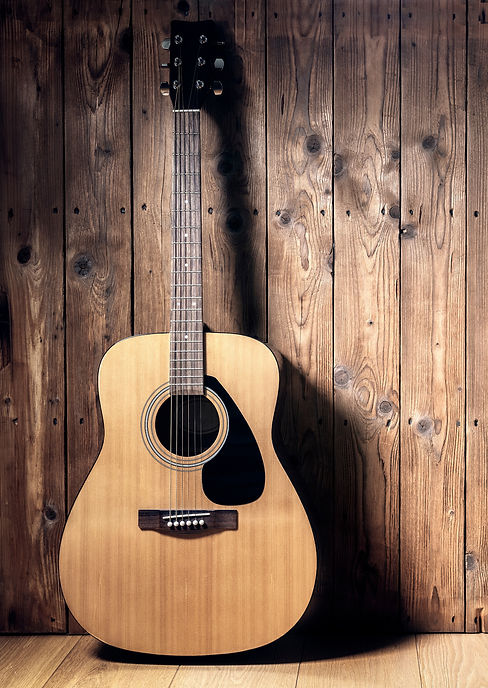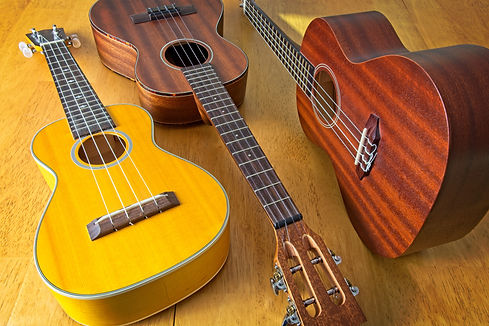

FIRST STRUM GUITAR LESSONS LLC
What Do I Need to Start?
A Short Guide


What acoustic guitar is the
best choice for me?
Look for a guitar that fits your budget, sits comfortably on your lap, and sounds good to you.
What should I consider
when buying an acoustic guitar?
If the guitar feels too big in your lap or if your arms feel over-stretched when playing, the guitar is likely too large. Pay attention to the action of the guitar. The action of a guitar is the distance between the strings and the fretboard. Guitars with low action require less finger strength. Your action shouldn't be too low or it may cause the strings to buzz.
What if the guitar strings feel
too difficult to press down?
This is a totally normal feeling. Remember that finger strength will naturally grow with practice.
At what age should my child start guitar lessons?
Some recommend around the age of 8, but any child that has an interest in music and can hold a guitar comfortably is able to start learning. If your child cannot hold a full-size guitar comfortably, look for a mini guitar like the Taylor GS Mini.
Can I still learn to play guitar if I have hand arthritis or other hand problems?
In most cases, definitely! In fact, playing a guitar is often recommended by physicians and physical therapists as a way to maintain and improve hand mobility, strength, and functioning. The type of strings placed on your guitar will be important to ensuring you can play comfortably. If you have a particularly difficult time using your hands, ukuleles require much less hand strength and mobility than guitars. Please reach out to us for more suggestions and recommendations specific to you. As always, talk to your healthcare providers to get their approval and recommendations prior to starting lessons.
RECOMMENDATIONS FOR
ACOUSTIC GUITARS:
Yamaha FG800 (around $225)
Epiphone DR-100 (around $175)
While used instruments are often more affordable than new ones, they can come with challenges such as being harder to play, needing frequent tuning or inability to stay in tune, or having a shorter lifespan. Generally, the quality of sound and performance tends to match the level of investment you make. Although I strongly encourage purchasing a guitar equal or greater to the quality of the above-mentioned guitars, if your budget simply does not allow for the above price range, it is better to buy a high-quality used guitar than a lower-quality new guitar. Please feel free to contact us if we can be of help.
What ukulele is the
best choice for me?
Look for a ukulele that fits your budget, is comfortable to hold, and sounds good to you.
What are the different
types of ukulele?
There are many different types of ukuleles. At First Strum, we teach soprano, concert, tenor, and baritone ukulele. Make sure your purchase aligns with one of these most common types of ukulele.
Soprano and concert ukuleles are generally the smallest of these instruments and have a bright sound, while the concert ukulele has a deeper and louder output. Either of these ukuleles are a wonderful choice for small children and also work well for adults. Soprano and concert ukuleles generally measure 21 and 23 inches long, respectively.
Tenor ukuleles are bigger and have a bright sound too. They feature a deeper, more resonant sound than soprano or concert ukuleles. It's roomier fingerboard can accommodate larger hands more easily. Tenor ukuleles generally measure 26 inches long.
Baritone ukuleles have a similar sound to a guitar. It's tuned like the four highest strings on a guitar. It's an ideal choice for players who want to explore more complex musical styles and genres. Baritone ukuleles generally measure 30 inches long.
Will my hands be too small
or too big for a certain
type of ukulele?
It may feel like your fingers are too short, too long, or too big when you first start playing stringed instruments. This is a normal feeling that will subside as you play more. Young children (6 years old or older) usually are able to play baritone ukuleles, though it may feel like the fingers are being stretched at first. On the other hand, many adults with larger fingers can still play soprano ukuleles. Again, some finger discomfort in the beginning is normal. Test out different types of ukuleles, if possible.
At what age should my child start ukulele lessons?
Some recommend around the age of 8, but any child that has an interest in music and can hold a ukulele comfortably is able to start learning. Ukulele is regarded as a very child-friendly option when choosing an instrument.
Can I still learn to play guitar
if I have hand arthritis or
other hand problems?
In most cases, definitely! In fact, playing a ukulele is often recommended by physicians and physical therapists as a way to maintain and improve hand mobility, strength, and functioning. Please reach out to us for more suggestions and recommendations specific to you. As always, talk to your healthcare providers to get their approval and recommendations prior to starting lessons.
RECOMMENDATIONS FOR UKULELES:
Kala KA-15S Soprano Ukulele (around $50-$70)
Cordoba 15CM Concert Ukulele (around $100-$150)
Cordoba 15TM Tenor Ukulele (around $100-$150)
Lanikai LU-21B Baritone Ukulele (around $120-$170)
While used instruments are often more affordable than new ones, they can come with challenges such as being harder to play, needing frequent tuning or inability to stay in tune, or having a shorter lifespan. Generally, the quality of sound and performance tends to match the level of investment you make.


What kind of electric
guitar should I buy?
Look for a guitar that fits your budget and sits comfortably on your lap.
What should I consider when
buying an electric guitar?
If your arms feel over-stretched when playing the guitar, it is likely too large. If you are buying an electric guitar from a physical store, ask for assistance to test out the guitar with an amp. Have the employee show you the functions of the guitar. All electric guitars have different built-in functions, but most will have at least a volume control knob and a toggle switch on the guitar. Less expensive electric guitars can produce a noticeable buzz when connected to an amp. Be sure you’re comfortable with the level of buzz your guitar generates.
At what age should my child start playing electric guitar?
Your child should clearly understand the functions of his or her equipment and be able to use potentially heavy electronic equipment safely. I highly recommend young children start their guitar journey by learning on an acoustic guitar.
Can I still learn to play guitar if I have hand arthritis or other hand problems?
In most cases, definitely! In fact, playing a guitar is often recommended by physicians and physical therapists as a way to maintain and improve hand mobility, strength, and functioning. The type of strings placed on your guitar will be important to ensuring you can play comfortably. If you have a particularly difficult time using your hands, ukuleles require much less hand strength and mobility than guitars. Please reach out to us for more suggestions and recommendations specific to you. As always, talk to your healthcare providers to get their approval and recommendations prior to starting lessons.
Am I ready for an electric guitar?
In my experience, it is usually best to learn on an acoustic guitar first. This is because acoustic guitars require more finger strength and help build that finger strength. Learning on an acoustic and then moving to an electric guitar is quite easy, but going from an electric guitar to an acoustic guitar can feel much harder because you won't have the finger strength. That being said, learn on the instrument you like. There is nothing wrong with learning how to play on an electric guitar first.
RECOMMENDATIONS FOR ELECTRIC GUITARS:
Squier Affinity Series Telecaster Electric Guitar (around $200-$250)
Ibanez GRX70QA Electric Guitar (around $200)
Used instruments can be significantly cheaper than new ones, but may be more difficult to play, detune easily, require more maintenance, or have a buzzing sound. Generally, you will get what you pay for as far as quality. Although I strongly encourage purchasing a guitar equal or greater to the quality of the above-mentioned guitars, if your budget simply does not allow for the above price range, it is better to buy a high-quality used guitar than a lower-quality new guitar.
What is common gear that players often purchase
along the way?
FOR ACOUSTIC GUITAR
-
Guitar capo
-
Picks
-
Clip-on tuner
-
Guitar strap, to play while standing
-
Guitar string changer multitool
FOR ELECTRIC GUITAR
-
Guitar capo
-
Picks
-
Clip-on tuner
-
Guitar strap, to play while standing
-
Amplifier with power and amp cords
FOR UKULELE
-
Picks
-
Clip-on tuner, guitar tuners work fine in most cases
RECOMMENDATIONS FOR AMPLIFIERS:
Fender Frontman 20G Guitar Amp
(around $100)
Fender Frontman 10G Guitar Amp
(around $80)
Used amps can be significantly cheaper than new ones, but may have sound issues or buzzing sounds. Generally, you will get what you pay for as far as quality.



